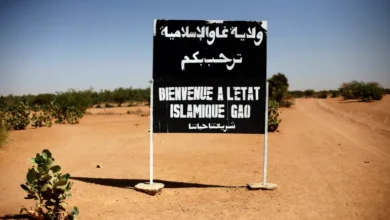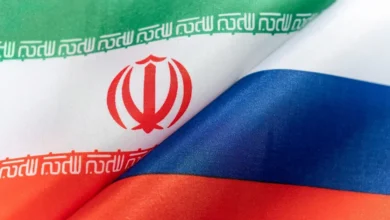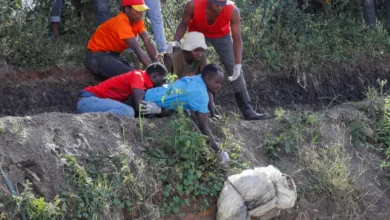Chillis and chicken: An Indian kitchen of love, from violence-hit Manipur

Bidotama, 26, is in the kitchen stirring peanuts in a pan. Every few minutes, she turns to her best friend, Mardza, 25, who is busy chopping tomatoes and slicing U-morok, a hot chilli variety, that will go into the special chicken curry bubbling on a two-burner gas stove.
They speak in their native Meitei language and chuckle as they continue cooking.
Now Bido and Mardza are Akoi’s house guests and she is their business partner in the lunch service they have started in an attempt to rebuild their lives after they were wrenched from their homes in Manipur in the wake of ethnic violence that broke out in May. It has left over 200 people dead and thousands injured, and turned the beautiful, scenic state with the world’s only floating national park, into a ravaged war zone.
A day after violence erupted, Manipur was placed under curfew and an internet ban was imposed that lasted till December. In those seven months, many businesses shut down, including Bido and Mardza’s.
In the clashes between the dominant, largely Hindu Meitei community and the minority Christian Kuki-Zo community, many have lost their homes and continue to live in relief camps in Manipur or, like Bido and Mardza, fled the state fearing for their lives and in search of a livelihood.
In the New Delhi apartment, all three women find solace in cooking, eating, talking about their food and running the Lomba Kitchen.
“This meal from Lomba Kitchen is Yum Gi mathel,” types Akoi on her phone as she composes a brief note about the Manipuri dishes. She will WhatsApp it to customers as the food parcels are sent out for delivery later in the day.
Their enterprise is named after a purple-coloured herb that looks like lavender and has a citrusy aroma and a peppery taste – the Lomba. It flowers around October-November and is used as a garnish in several Manipuri dishes.
“The name Lomba has meaning … When we think of winter, we think of Lomba. It reminds us of home,” says Bido.
Akoi crushes some Lomba flowers and sprinkles them on eromba, a mash made with yendem (colocasia) stalks, beans, sponge gourd, potatoes and fermented grilled fish. In the text she is sending to customers, she calls it “an object of our unconditional love”.
It’s 7am, and New Delhi’s temperature has dropped to a freezing single digit. But Akoi’s apartment, where the Sunday lunch menu is slowly coming together, is warm with the aroma of Manipur.
‘Dirty food’
Roughly 1,500 miles from New Delhi, Manipur is one of the seven “sister states” in the northeast that is geographically connected by a narrow 200km (120-mile) strip of land called the Chicken’s Neck to India’s mainland.
Most people from the northeast have distinct physical features and culinary traditions that add to India’s much-vaunted diversity. But incidents of racial discrimination, even verbal and physical abuse for their food choices, are routine in cities they migrate to, like New Delhi and Mumbai.
Staples like fermented bamboo shoots, soya bean paste and dried fish are added to northeastern dishes for their meaty, savoury aroma and umami flavour – one of the five core tastes that include sweet, sour, bitter and salty.
In her 2022 paper on “Dirty Food, racism and casteism in India”, anthropologist Dolly Kikon gives the instance of landlords and neighbours finding the food cooked by people from the northeast “stinky and revolting”, a reaction that, she says, stems from “ignorance of the eclectic food cultures in northeast India”.
The 2019 Bollywood film Axone, about a group of friends cooking the northeastern delicacy akhuni (or axone) with pork and strong-smelling, fermented soya beans, captures the hate that northeastern food often faces in the rest of India.
“My food has been so racially attacked that I always wanted to do something around food … When they [Bido and Mardza] came to stay here, we started talking about cooking … Maybe invite people over for a Manipuri meal,” Akoi says and then laughs as she adds: “But we didn’t have a dining table.”
Bido came out and heard from the people who had gathered that there had been clashes between members of the Meitei and Kuki-Zo communities in Churachandpur, a hill district 200km (120 miles) from Imphal. Houses were being burned and there had been incidents of firing.
“It started raining,” says Bido, and under the soft solar street lights, she saw a religious procession coming her way. “I could see women on horseback, people dancing and singing because Lainingthou Sanamahi, considered the king of all gods, was returning to the local shrine,” Bido says.
The chatter in her community about the violence was getting louder and suddenly, she recalls, “The procession stopped … The clarinets, the drums fell quiet … It was eerie.”
The Meiteis, who are politically strong, live in and around the Imphal valley, occupying about 10 percent of the state’s land.
Kukis live predominantly in the hills and are listed as Scheduled Tribes, a constitutional protection given to historically disadvantaged tribes. It comes with certain guarantees, including job reservations and land rights.
For years, Meiteis have been demanding their inclusion in the Scheduled Tribes list, which would entitle them to jobs and government loans, and also give them the right to buy tribal land in the hill districts.
Their demand has been rejected in the past, but on March 27, 2023, a court directed the Manipur government to consider including Meiteis in the Scheduled Tribe list, triggering protests and clashes.
“Our neighbourhood was not affected by violence,” says Bido, but adds that there was constant fear of being attacked, often fuelled by rumours.
May 5, 2023, was one such night when a rumour swirled about three armed Kuki men hiding in the river. “Everyone was so delusional, so paranoid,” Bido recalls.
At 1am, several men from her locality jumped into the river and began searching for the armed men. On Mardza’s side, people were out with big flashlights scanning the water for signs of humans.
Bido could not sleep at night. Lying awake, the slightest sound would make her panic.
In anticipation of a sudden attack, she kept her sneakers close and packed a small school bag. It had her educational certificates, a couple of candles, a matchbox, a T-shirt, a water bottle, some paracetamol, cyclopam tablets for menstrual pain and three Choco Pies.
When Bido and Mardza eventually left Manipur at the end of May, they carried a small suitcase and a red handbag: They had packed some summer clothes, ngari (fermented) fish, fermented bamboo shoots and dry chillies. The plan was to get away for a few days, get some sleep, get some work and, when the violence subsided, to return home.










